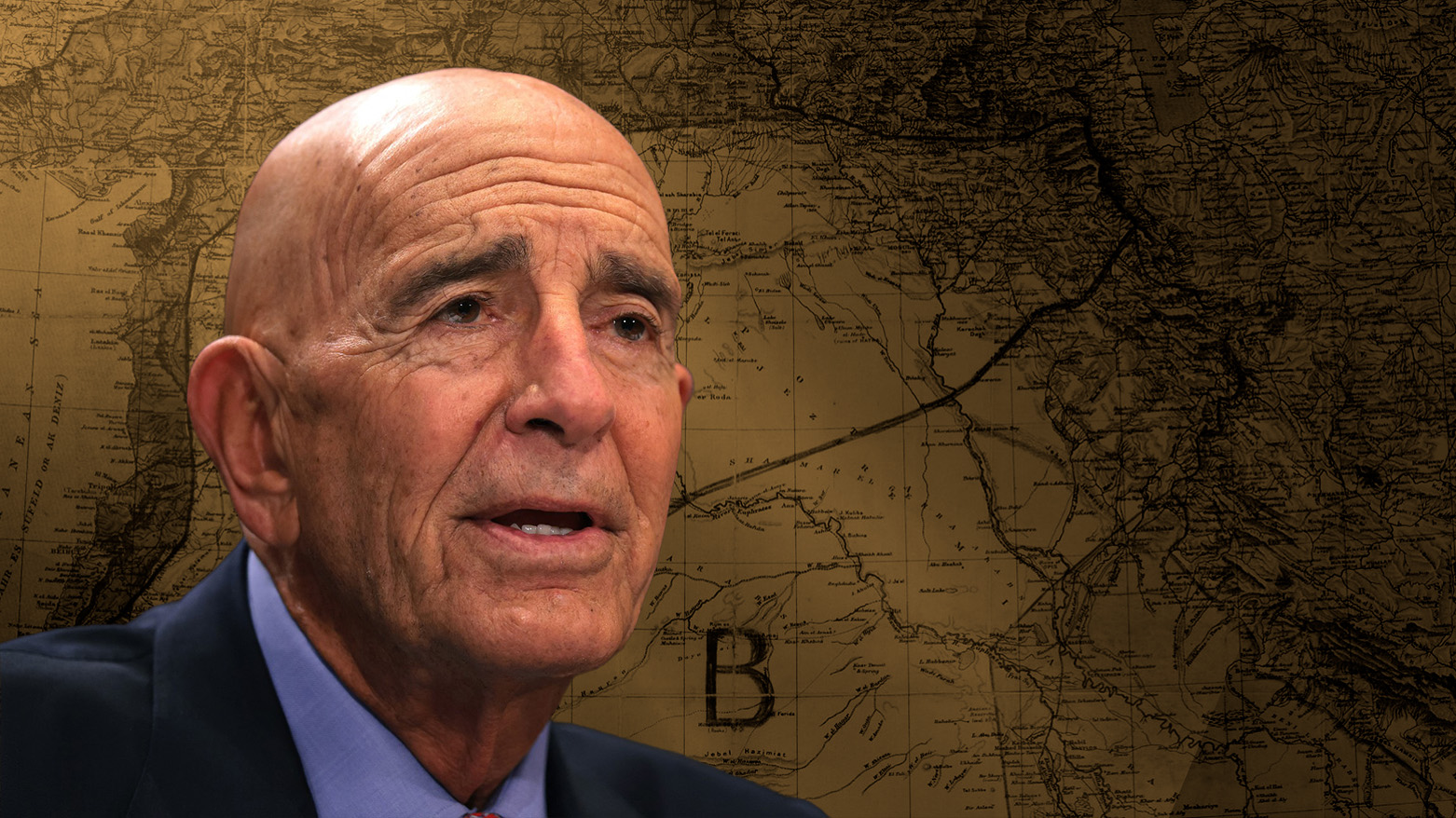'We Will Not Make That Mistake Again,' U.S. Envoy to Syria Slams Sykes-Picot Legacy
Sykes-Picot divided Syria and the broader region for imperial gain—not peace. That mistake cost generations. We will not make it again,” Amb. Tom Barrack said.

By Kamaran Aziz
ERBIL (Kurdistan24) – In a strongly worded statement, U.S. Ambassador to Türkiye and Special Envoy for Syria, Tom Barrack, condemned the historical legacy of Western-imposed borders in the Middle East and signaled a major policy shift toward regional cooperation and local empowerment in resolving the Syrian crisis.
Posting on X (formerly Twitter) on Sunday, Ambassador Barrack drew a sharp contrast between the past century of imperial division and the current U.S. approach under President Donald Trump’s administration. “A century ago, the West imposed maps, mandates, penciled borders, and foreign rule,” Barrack wrote. “Sykes-Picot divided Syria and the broader region for imperial gain—not peace. That mistake cost generations. We will not make it again.”
A century ago, the West imposed maps, mandates, penciled borders, and foreign rule. Sykes-Picot divided Syria and the broader region for imperial gain—not peace. That mistake cost generations. We will not make it again.
— Ambassador Tom Barrack (@USAMBTurkiye) May 25, 2025
The era of Western interference is over. The future…
Emphasizing a clear break from the era of foreign intervention, Barrack declared, “The era of Western interference is over. The future belongs to regional solutions, to partnerships, and to diplomacy grounded in respect.”
He cited President Trump’s May 13th speech in Riyadh as a defining moment in the administration’s approach: “Gone are the days when Western interventionalists would fly to the Middle East to give lectures on how to live, and how to govern your own affairs.”
Addressing Syria’s long-standing turmoil, Barrack stated, “Syria’s tragedy was born in division. Its rebirth must come through dignity, unity, and investment in its people. That starts with truth, accountability—and working with the region, not around it.”
He affirmed that the U.S. is aligning with regional actors to support a Syrian-led recovery process: “We are standing with Türkiye, the Gulf, and Europe—this time not with troops and lectures, or imaginary boundaries, but shoulder-to-shoulder with the Syrian people themselves.”
Notably, Barrack linked the possibility of peace with the fall of the Assad regime and the lifting of sanctions: “With the fall of the Assad regime the door is open to peace—by eliminating sanctions we are enabling the Syrian people to finally open that door and discover a path to renewed prosperity and security.”
The post reflects a strategic pivot in U.S. foreign policy messaging, emphasizing accountability, partnership, and investment over military intervention and top-down governance models.
The Sykes-Picot Agreement
The Sykes-Picot Agreement, formally known as the Asia Minor Agreement, was a secret pact concluded in May 1916 between Britain and France, with the assent of Imperial Russia, during the height of the First World War. Named after its chief negotiators—Sir Mark Sykes of Britain and François Georges-Picot of France—the agreement aimed to divide the Ottoman Empire’s Arab provinces into zones of direct and indirect control by the Allied powers in anticipation of the Empire’s defeat.
Under the agreement, France was allocated control over present-day Syria, Lebanon, and parts of southern Anatolia, while Britain received authority over what would later become Iraq, Jordan, and southern Palestine. The Palestine region, including Jerusalem, was designated for international administration, reflecting its religious and strategic significance.
The agreement undermined Arab aspirations for post-war independence, despite earlier British promises—most notably those conveyed in the Hussein-McMahon Correspondence (1915–1916)—to support the creation of an independent Arab state in exchange for the Arab revolt against the Ottomans. When the agreement was leaked by the Bolsheviks in 1917, it sparked outrage among Arab nationalists, revealing the duplicity of imperial powers and marking a pivotal moment in the history of Middle Eastern political fragmentation.
The Sykes-Picot Agreement has since become a symbol of Western colonial interference, often invoked in contemporary discourse to explain the legacy of artificial borders, sectarian tensions, and protracted instability in the region.
Kurds and the Sykes-Picot Agreement
One of the most consequential absences in the Sykes-Picot Agreement was the lack of any provision for the Kurdish people, despite their distinct ethnic, linguistic, and cultural identity and their substantial presence across the Ottoman Empire. At the time, the Kurds inhabited a vast, contiguous region that stretched across eastern Anatolia, northern Mesopotamia, and western Persia—a territory that, following the war, would be fragmented between modern-day Turkey, Syria, Iraq, and Iran.
Although Woodrow Wilson’s Fourteen Points (1918) raised hopes for self-determination among various stateless peoples, including the Kurds, such aspirations were sidelined in the postwar treaties. The 1920 Treaty of Sèvres nominally promised a Kurdish state, but it was never implemented. Instead, the subsequent Treaty of Lausanne (1923) omitted Kurdish autonomy entirely, solidifying the partitioning of Kurdistan across multiple nation-states.
This historical marginalization set the stage for a century of denied nationhood, cultural repression, and cycles of rebellion and resistance. Today, many Kurdish analysts and political leaders point to the legacy of the Sykes-Picot borders as a foundational injustice that continues to shape Kurdish struggles for autonomy and recognition across the region.
Sources:
David McDowall, A Modern History of the Kurds (I.B. Tauris, 2004).Encyclopaedia Britannica, “Sykes-Picot Agreement.”James Barr, A Line in the Sand: Britain, France and the Struggle that Shaped the Middle East (Simon & Schuster, 2011).Margaret MacMillan, Paris 1919: Six Months That Changed the World (Random House, 2002).Michael Gunter, The Kurds: A Modern History (Markus Wiener Publishers, 2016).The British National Archives: “The Sykes-Picot Agreement, 1916.”The Wilson Center: Middle East Program Reports on Kurdish Self-Determination.
